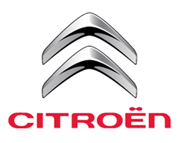Citroen's Green Credentials Reinforced in Van Co2 Database
 |
SLOUGH, UNITED KINGDOM – June 11, 2009: CitroŽn has come out ahead of the competition in the newly published Department for Transport/SMMT Van CO2 database. As one of the first manufacturers in the UK to provide its customers with LCV CO2 figures and one of the most proactive in reducing the carbon footprint of its vehicles, this database shows that CitroŽn’s innovative Nemo van – the UK’s most fuel efficient van – leads the field when it comes to a compact city van which can carry over 600kg with a CO2 figure of just 116g/km.
Robert Handyside, Commercial Vehicle Operations Manager, comments, “CitroŽn has long been recognised as one of the most proactive LCV manufacturers in the field of reducing the environmental impact of its vehicles. We are delighted to say that not only is our C2 Enterprise van – at just 113g/km – one of the best available for CO2 emissions, but also we are the best in the larger capacity van sector. The Nemo van, with its compact dimensions and low 116g/km CO2 emissions, is ideal for a wide range of business transport applications with its 610kg payload and 2.5cu m load compartment. We are also delighted that the Department for Transport/SMMT Van CO2 database also shows that CitroŽn has exceptional fuel economy figures across its LCV range.”
And CitroŽn’s green credentials are further reinforced with the new Berlingo which, with CO2 emissions starting from just 153g/km, is significantly better than the market leader and most other vans in its class. Further up the weight range, CitroŽn’s Dispatch is the best compact panel van with CO2 emissions starting from just 191g/km and the Relay range also sets the pace with CO2 emissions from only 208g/km – significantly better than the market leaders in the large van sector.
CitroŽn offers three sub 120g/km CO2 emission LCVs:
In addition, thanks to their state-of-the-art HDi diesel engine technology delivering fuel efficient, green performance, CitroŽn’s larger vans also provide exceptional low CO2 emissions:


